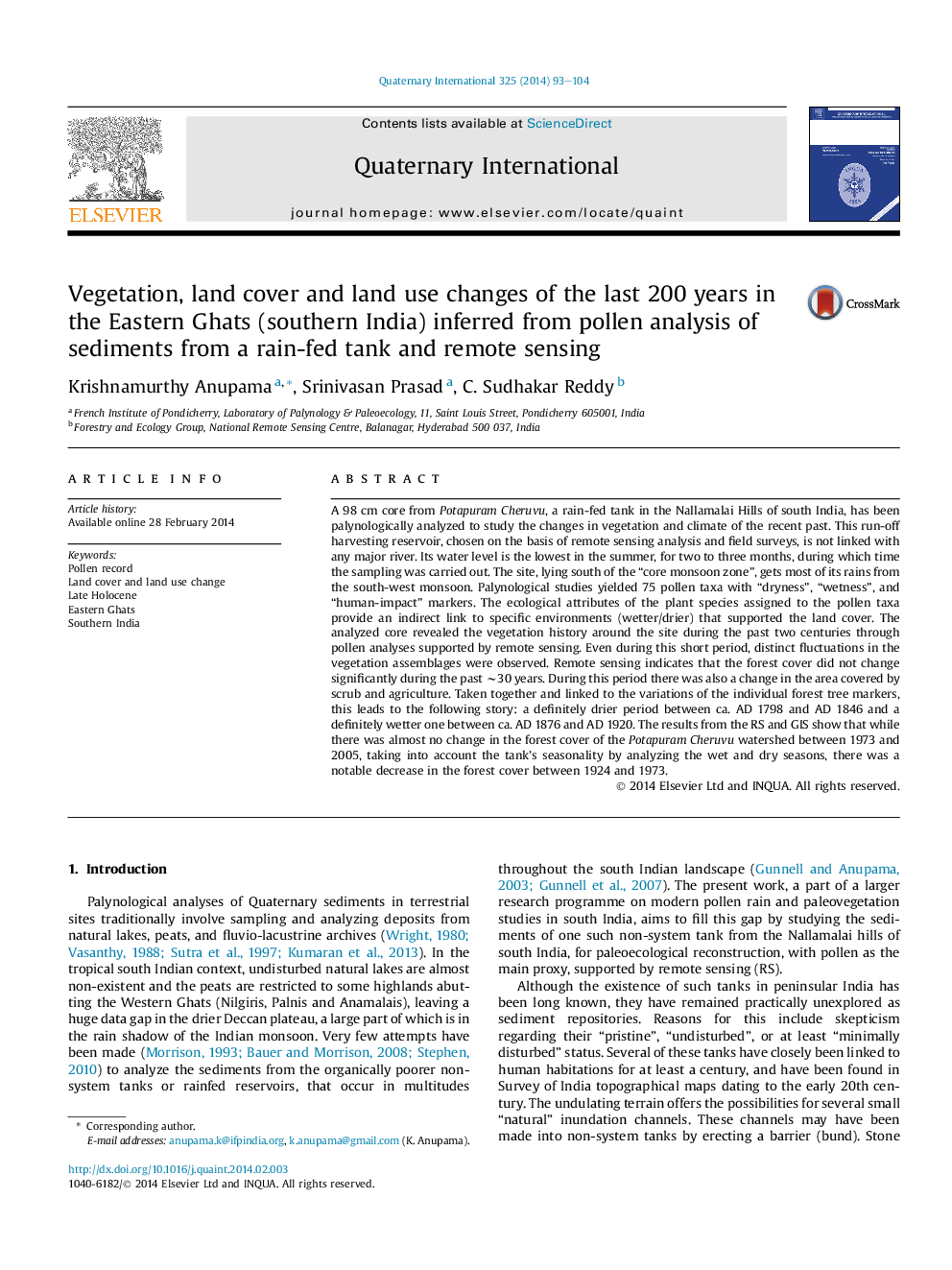| Article ID | Journal | Published Year | Pages | File Type |
|---|---|---|---|---|
| 1041381 | Quaternary International | 2014 | 12 Pages |
A 98 cm core from Potapuram Cheruvu, a rain-fed tank in the Nallamalai Hills of south India, has been palynologically analyzed to study the changes in vegetation and climate of the recent past. This run-off harvesting reservoir, chosen on the basis of remote sensing analysis and field surveys, is not linked with any major river. Its water level is the lowest in the summer, for two to three months, during which time the sampling was carried out. The site, lying south of the “core monsoon zone”, gets most of its rains from the south-west monsoon. Palynological studies yielded 75 pollen taxa with “dryness”, “wetness”, and “human-impact” markers. The ecological attributes of the plant species assigned to the pollen taxa provide an indirect link to specific environments (wetter/drier) that supported the land cover. The analyzed core revealed the vegetation history around the site during the past two centuries through pollen analyses supported by remote sensing. Even during this short period, distinct fluctuations in the vegetation assemblages were observed. Remote sensing indicates that the forest cover did not change significantly during the past ∼30 years. During this period there was also a change in the area covered by scrub and agriculture. Taken together and linked to the variations of the individual forest tree markers, this leads to the following story: a definitely drier period between ca. AD 1798 and AD 1846 and a definitely wetter one between ca. AD 1876 and AD 1920. The results from the RS and GIS show that while there was almost no change in the forest cover of the Potapuram Cheruvu watershed between 1973 and 2005, taking into account the tank's seasonality by analyzing the wet and dry seasons, there was a notable decrease in the forest cover between 1924 and 1973.
